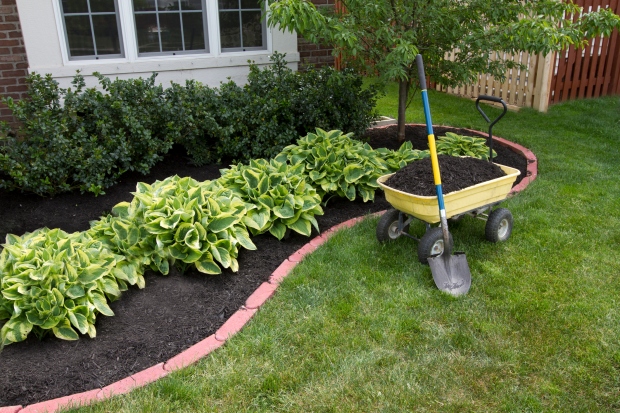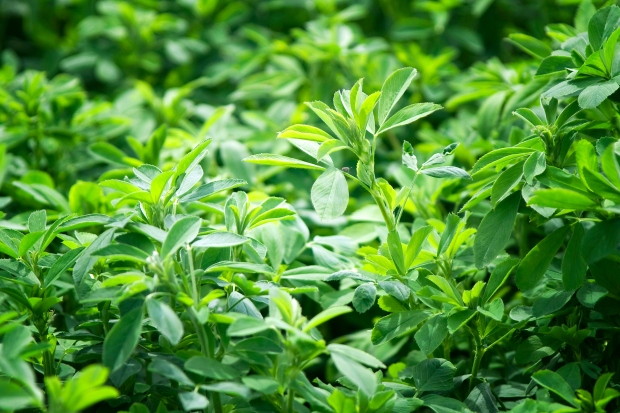Exploring Useful Methods to Control and Prevent Weeds
Designing and structuring a garden is the first line of defense when controlling and eradicating weeds. Incorporating design choices throughout the garden by selecting appropriate landscape materials and plants can vastly reduce, if not eliminate, the weed’s ability to invade and take over gardens.

Staying within the limits of local environmental, topographical and geographical conditions will ensure that harvest plants and organic materials thrive in a garden.
Locations with heavy precipitation may not be ideal for lightweight natural mulch, as this material is easily eroded and carried into unwanted areas via water flow. Slopes, banks, level areas, and even wall faces also play a part in the decision-making process. For instance, loose material such as pine straw is inappropriate for steep terrain due to its mobility and is better suited to level surfaces. Similarly, materials and plants considered for weed management are limited to their location. For example, coastal tropical areas produce coral rock and shells, whereas cypress forests produce timber used to manufacture decorative mulch. Similarly, plant availability can differ from region to region. Understanding the effects of the natural environment on materials and plants can help save time, energy, and financial costs.
Tackle Weed Prevention with Soil Covers
Organic Material

Ground-covering materials such as natural mulch, pine straw, and pine bark are all affordable, raw materials that provide an excellent solution to weed control. They work by creating a separation barrier that limits the growth of weeds. In addition, natural materials retain moisture, decompose over time, provide additional nutrients to the soil, and regulate soil temperature due to their insulating properties.
Mulch should be layered on top of planting beds with a thickness of approximately one to four inches, ideally three inches. It’s essential to stay within this range as under-mulching will be ineffective, and over-mulching may suffocate the plants.
Aggregate Material

Much like organic material, aggregate such as river rock, shell, and pea shingle creates a separating barrier, deterring weeds from germinating and sprouting in the covered locations. As opposed to retaining moisture like organic material, aggregate provides drainage allowing the water to pass straight through. Aggregate material is desirable in areas that experience higher water flow because aggregate material will dramatically reduce erosion. Initial costs for aggregate tend to be higher but are offset by their low maintenance and durability.
The depth of aggregate installation differs depending on the material itself. Likewise, the size of the material will vary depending on the material used.
Depth Calculator
- Range of material size 1/2″ – 5/8″ Depth 2″
- Range of material size 3/4’’-1″ Depth 2″
- Range of material size 1’’-3″ Depth 1’’-3″
- Range of material size 3’’-8″ Depth 3’-8″
Material Membrane & Fabric

Membranes and landscaping fabrics are an excellent preventer of weed growth at an affordable cost. They are used extensively within agricultural farming as a stanalone solution. Incorporating them into the garden environment in conjunction with aggregates and organic materials significantly improves weed management, creating a near-impenetrable barrier. In addition, they successfully prevent the covering materials from mixing with the ground beneath, aiding in their longevity. Membranes and fabrics do not require additional coverage and are excellent for vegetable patches and greenhouses. In landscaping, it’s best to add covering such as mulch and aggregate for a more pleasing look. Manufactured materials are available in various specifications and easily adapt to all sorts of environmental, topographical, and geographical scenarios.
Cover-Crop Plants

Alternatively referred to as smother crops, cover crops competitively suppress unwanted weeds. The more robust cover-crop plants establish themselves rapidly, effectively outgrowing weeds and suffocating weed seedlings. Cover crop’s dominant ability is to consume resources beyond the threshold of the weed’s needs. They effectively smother weeds by depriving them of nutrients, moisture, sunlight, and space. Cover crops can have advantages over other weed management solutions. They tend to have a more appealing appearance and may lower costs when covering large areas.
Examples of Cover Crops/Smother Crops
- Grasses & Grains: Barley, Ryegrass, Buckwheat, Oats.
- Brassicas: Forage Radish, Canola, Mustard, Arugula.
- Legumes: Alfalfa, Field Peas, Fava Beans, Crimson Clover.